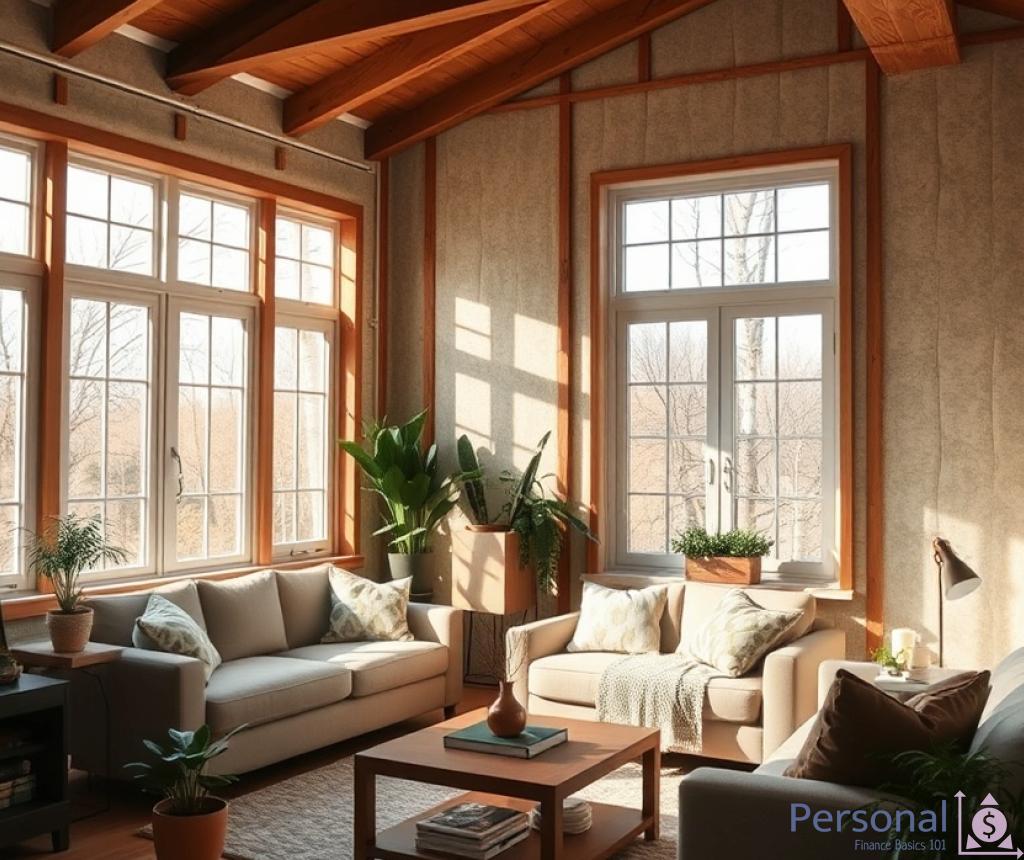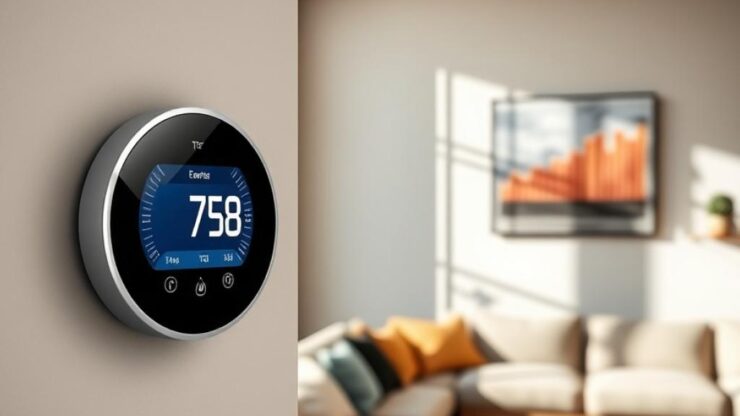Optimizing Thermostat Settings
In the quest for energy efficiency and cost reduction, optimizing your thermostat settings plays a pivotal role. By making informed adjustments to your thermostat, you can not only enhance your comfort but also significantly reduce your energy bills. This article explores effective strategies to optimize your thermostat settings, providing you with the tools to save money while maintaining a pleasant indoor climate.
The temperature setting on your thermostat can greatly influence your cooling costs. The U.S. Department of Energy recommends setting your thermostat to 78°F (26°C) when you are at home and active. This temperature strikes a balance between comfort and energy efficiency. However, during periods when you are away from home, consider raising the thermostat setting by a few degrees. Each degree you increase can save you approximately 3% on your cooling costs.
| Thermostat Setting | Estimated Savings |
|---|---|
| 78°F (26°C) | Baseline |
| 80°F (27°C) | 6% |
| 82°F (28°C) | 12% |
Investing in a programmable or smart thermostat can further enhance your ability to save on air conditioning costs. These devices allow you to set schedules that automatically adjust the temperature based on your daily routine. For example, you can program the thermostat to raise the temperature when you are away at work and cool down shortly before you return home. This capability not only boosts convenience but also maximizes energy savings.
Benefits of Programmable and Smart Thermostats:
- Energy Savings: Automatically adjusts based on your schedule.
- Remote Access: Control your thermostat from anywhere via smartphone.
- Learning Features: Some smart thermostats learn your habits and optimize settings accordingly.
Enhancing Home Insulation

When it comes to reducing air conditioning costs, enhancing your home insulation is a critical yet often overlooked strategy. Proper insulation not only helps maintain a comfortable indoor temperature but also minimizes the workload on your cooling system. This, in turn, leads to significant savings on energy bills. By preventing cool air from escaping and warm air from infiltrating, effective insulation ensures that your air conditioner operates more efficiently, allowing you to enjoy a more stable indoor climate without incurring exorbitant costs.
There are various types of insulation materials available, each with its unique properties and applications. For instance, fiberglass insulation is renowned for its affordability and effectiveness, making it a popular choice for attics and walls. On the other hand, spray foam insulation offers superior air sealing capabilities, providing an airtight barrier that significantly reduces energy loss. Furthermore, reflective or radiant barriers can be particularly beneficial in warmer climates, as they reflect heat away from the living space, thereby reducing the demand for cooling. By understanding the benefits of each insulation type, homeowners can make informed decisions that align with their specific needs and budget.
To optimize your home’s insulation, start by conducting a thorough assessment of your current insulation levels. Areas such as the attic, basement, and crawl spaces are often the biggest culprits for energy loss. If these areas are under-insulated, consider adding additional material to achieve the recommended R-value for your region. Sealing gaps around windows and doors with weather stripping or caulk is another effective method to enhance insulation. Additionally, investing in energy-efficient windows can further bolster your insulation efforts by reducing heat transfer. Remember, the more efficient your insulation, the less your air conditioning system needs to work, leading to lower energy costs and a more comfortable living environment.
Utilizing Energy-Efficient Appliances
As the demand for cooling increases during the sweltering summer months, the need for effective and energy-efficient air conditioning systems becomes paramount. One of the most impactful ways to save money on air conditioning is by integrating energy-efficient appliances into your home. These appliances are designed not only to consume less energy but also to deliver superior performance, ultimately translating to lower utility bills and a reduced carbon footprint. By understanding the benefits of energy-efficient appliances, homeowners can make informed decisions that enhance comfort while maximizing savings.
When considering the purchase of air conditioning units or other related appliances, it is essential to pay attention to energy efficiency ratings such as the Energy Star label. Appliances bearing this label meet strict efficiency guidelines set by the U.S. Environmental Protection Agency. For instance, an air conditioning unit with a high Seasonal Energy Efficiency Ratio (SEER) is considered more efficient than those with lower ratings. Investing in units with better ratings means they use significantly less energy to cool your home, which can lead to substantial savings over time. Homeowners can save up to 30% on cooling costs by switching to an Energy Star-certified air conditioner compared to traditional models.
In addition to energy-efficient air conditioners, integrating complementary technologies throughout the home can enhance overall energy savings. For example, using ceiling fans in conjunction with your cooling system can help circulate cool air more effectively, allowing you to raise your thermostat setting by a few degrees without sacrificing comfort. Furthermore, energy-efficient appliances such as refrigerators and washing machines can contribute to lower energy consumption in the home. By replacing older appliances with modern, energy-efficient models, you not only reduce your overall energy use but also decrease the load on your air conditioning system, resulting in further financial savings.
Implementing Regular Maintenance Practices
One of the most effective strategies to reduce air conditioning costs is through regular maintenance of your cooling system. Just like any other major appliance in your home, your air conditioner requires periodic attention to ensure it operates efficiently. By committing to a routine maintenance schedule, not only do you enhance the longevity of your system, but you also improve its performance, ultimately leading to significant savings on your energy bills.
Regular maintenance is crucial for several reasons. First, it ensures that your system is running at peak efficiency, which can drastically reduce energy consumption. Second, it helps identify any potential issues before they escalate into costly repairs. Third, a well-maintained air conditioning unit operates more quietly and effectively, enhancing your overall comfort at home. Investing in maintenance can yield a return in the form of lower monthly energy costs and extended equipment lifespan.
To maximize the benefits of regular maintenance, consider implementing the following practices:
- Filter Replacement: Dirty filters restrict airflow, causing your system to work harder. Replace or clean your filters monthly during cooling season.
- Coil Cleaning: Dust and debris can accumulate on both the evaporator and condenser coils, reducing efficiency. Schedule a professional cleaning at least once a year.
- Thermostat Calibration: Ensure your thermostat is accurately reading the temperature. An incorrect thermostat setting can lead to increased energy use.
- Inspect Ducts: Leaks in ductwork can lead to significant energy loss. Regularly inspect and seal ducts to maximize airflow.
- Annual Professional Tune-Up: Hire a qualified technician for a comprehensive inspection and tune-up once a year to catch any issues before they affect performance.
To reap the full benefits of these practices, create a maintenance schedule that outlines when each task should be completed. For example, you might choose to replace filters monthly, clean coils bi-annually, and schedule a professional tune-up at the start of each cooling season. By establishing a consistent routine, you can ensure that your air conditioning system remains in optimal condition throughout its lifespan, keeping costs low and comfort high.
Exploring Alternative Cooling Solutions
As rising temperatures push the demand for air conditioning, many homeowners are seeking innovative and cost-effective alternatives to traditional cooling methods. Exploring alternative cooling solutions not only contributes to lower energy bills but also promotes a more sustainable lifestyle. By considering various cooling strategies, you can discover options that suit your preferences while ensuring comfort during the hottest months.
One of the most effective ways to cool your home without relying heavily on air conditioning is through natural ventilation. This approach leverages the outdoor breeze and thermal dynamics to create a comfortable indoor environment. By strategically opening windows and doors during cooler parts of the day, you can facilitate cross-ventilation that reduces indoor temperatures.
In addition, using exhaust fans in kitchens and bathrooms can help expel hot air from your home. To maximize the benefits of natural ventilation, consider installing operable windows that allow for airflow control, and utilize window shades to minimize heat gain during peak sunlight hours.
Evaporative coolers, also known as swamp coolers, offer an energy-efficient alternative to traditional air conditioning units. These devices work by passing warm air through water-saturated pads, which cools the air through evaporation before circulating it into your home. They are particularly effective in dry climates, where humidity levels are low.
Not only do evaporative coolers consume significantly less energy than conventional air conditioning systems, but they also provide a refreshing humidity boost to the air, promoting better respiratory health. When considering this option, ensure proper maintenance and regular water replenishment to maximize performance.
Below are several alternative cooling solutions, along with their key features and benefits:
- Natural Ventilation: Cost-effective, utilizes outdoor air, promotes indoor air quality.
- Evaporative Coolers: Energy-efficient, ideal for dry climates, adds humidity to the air.
- Crossover Cooling Systems: Combines both ventilation and cooling methods, adaptable to various climates.
- Ceiling Fans: Circulates air, enhances comfort, allows for higher thermostat settings.
- Sun Control Techniques: Includes reflective window films and shades to reduce heat gain.
By evaluating these options, you can determine which alternative cooling solutions align with your home’s needs and your personal comfort preferences. Integrating one or more of these strategies can lead to a noticeable reduction in air conditioning costs while enhancing your overall living experience.
Disclaimer
This article has been created or edited with the support of artificial intelligence and is for informational purposes only. The information provided should not be considered investment advice. Please seek the support of a professional advisor before making any investment decisions.






